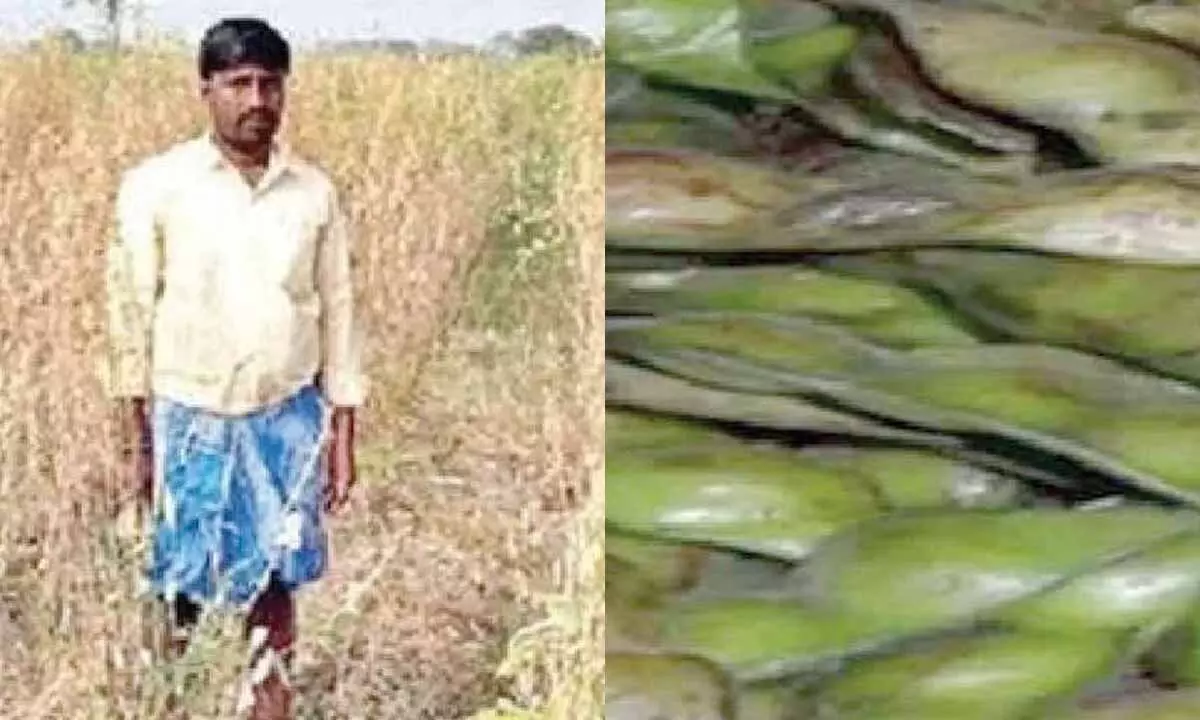Live
- Take police 'highhandedness' on CT Ravi seriously: K'taka Governor to Siddaramaiah
- Redmi 14C 5G Launched in India: Budget Smartphone Under Rs 10,000
- Football: Indonesia appoints Dutch legend Patrick Kluivert as head coach
- Amazon Launches Alexa-Enabled Echo Spot in India: Features, Price and More
- CM Mohan Majhi invites Indian diaspora to join developmental journey of Odisha
- United Breweries Halts Kingfisher Beer Supply to Telangana
- Human Metapneumovirus (HMPV): Understanding the infection and its impact on cancer patients
- Businessman Boby Chemmanur Arrested After Sexual Harassment Claims
- Akali Dal protests move to re-designate Advisor’s post to Chief Secy in Chandigarh
- Tax Breaks Galore: No Tax on Income Up to Rs. 7.75 Lakhs in the New System
Just In
Togari crop faces massive losses in Kalaburagi region


Kalaburagi, known for its bumper Togari (turdal) crops, is currently witnessing massive crop losses due to a disease that causes the plants to dry out.
Kalaburagi: Kalaburagi, known for its bumper Togari (turdal) crops, is currently witnessing massive crop losses due to a disease that causes the plants to dry out. Millions of hectares of crops have been affected, delivering a strong blow to the region’s farmers who were expecting a bountiful harvest.
Togari, widely cultivated in Kalaburagi district, has been a popular crop for local farmers. However, the optimism surrounding a good harvest has turned into despair as the crop has been severely impacted by a disease that causes it to dry out. Previously, farmers had faced losses from a disease called Nete (root rot) affecting their pigeon pea crops, and now, diseases such as Macrophomina phaseolina (dry root rot) and Phytophthora (blight) are spreading, threatening large-scale damage.
This year, Macrophomina phaseolina and Phytophthora diseases have taken a toll on the togari crop in Kalaburagi. These diseases are causing the crops to gradually wither. The varieties commonly grown in the district, such as GRI 811 and GRI 152, were expected to do well. However, while GRI 152 had resistance to the Fusarium wilt in the past, these new diseases have no resistance, leading to widespread crop failure, say agricultural scientists.
Togari crops are drying up in several taluks, including Aland, Afzalpur, Kalaburagi, and Kamalapur. In many of these areas, the crops are drying out due to moisture shortage, compounded by the disease. The total area under pigeon pea cultivation in the district is around 6.06 lakh hectares, with experts estimating that up to 2 lakh hectares could be affected by the disease. However, agriculture department officials state that the overall loss may not be as severe, and further clarity will emerge after joint surveys conducted by the department.
Due to heavy rainfall earlier in the season, farmers in Kalaburagi had sown their crops in June and July. The increased rainfall in July and September contributed to the growth of tall plants. However, this delayed the flowering stage by 20 to 25 days compared to previous years. Normally, by November, the crops would be in the final stages of flowering, but this year, they are still in the flowering stage. The delayed flowering, combined with the ongoing disease attack, has left farmers anxious about the crop’s final yield.
While the excessive rainfall earlier in the season helped the crops grow, it also created a moisture imbalance during the critical seed-setting stage. Normally, moisture is abundant during seed formation in October, but this year, rainfall has been scarce. With the seed-setting delayed by 25 days, the lack of adequate moisture is leading to concerns about the quality and yield of the pigeon pea crops.
With the district facing significant crop damage, farmers are calling for immediate government intervention. “The drying of pigeon pea crops in Kalaburagi is a major concern. We estimate that up to 2 lakh hectares of crops could be lost. The Agriculture Department must take immediate action by conducting a joint survey. The government should provide compensation for the affected farmers and ensure that insurance claims are processed swiftly. Additionally, a special relief package for the affected farmers should be announced in the upcoming legislative session,” said Sharambasappa Mammashetti, President of the State Farmers’ Union, Kalaburagi.
Agricultural scientists advise that farmers irrigate their crops wherever possible to manage the drying effects. “The current varieties of pigeon pea being grown are not resistant to the diseases that are spreading. Farmers should focus on providing water to the crops to alleviate stress. Timely interventions such as applying treatments for root rot and blight should also be considered,” said Mallikarjuna Kengnal, Agricultural Scientist at Krishi Vijnana Kendra .
The Kalaburagi district authorities have already started inspecting the affected areas, and a joint survey has been initiated to assess the extent of the damage. “We have visited various areas in the district and found that Phytophthora (blight) and Macrophomina (dry root rot) are causing significant damage to the pigeon pea crop.
The joint survey is ongoing, and we will provide more clarity once it is completed,” said Samad Patel, Joint Director of Agriculture. As the situation unfolds, farmers in Kalaburagi are hoping for timely intervention from the government to mitigate the effects of this devastating crop disease.

© 2024 Hyderabad Media House Limited/The Hans India. All rights reserved. Powered by hocalwire.com






